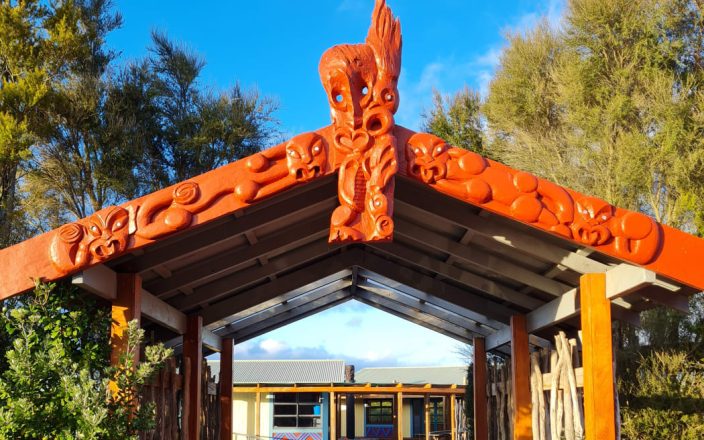Te Kura Kaupapa 毛利人的 waharoa o Tamaki-nui-a-Rua。
照片:RNZ /Pokere Paewai
在怀唐伊法庭作出裁决后,库拉·考帕帕毛利人正在庆祝一场重大胜利。法庭要求政府为考帕帕毛利学校设立一个单独的教育机构,这是库拉多年来一直想要的。该建议是在毛利人Te Rünanga Nui o ngar Kura Kaupapa 毛利人去年提出了一项条约主张之后提出的,该主张代表62库拉·考帕帕的毛利人。
法庭同意,政府在审查学校系统时在2018年至2022年期间违反了条约原则。它说,政府应该道歉并修复与库拉的关系。目标是教育部与库拉密切合作,了解他们的需求。
法庭支持库拉关于设立独立教育机构的想法。它指出:“我们建议政府承诺成立一个独立的考帕帕毛利人教育管理机构”,并与毛利利益相关者共同制定了细节。
rünanga nui联席主席凯茜·杜斯博士称这是一项重大突破。她说:“这是我们多年来一直向往的目标。”这个新机构将由毛利人而不是教育部控制。
杜斯提到了在法庭作证的人的评论:“给我们报酬然后避开。”这意味着政府应该为库拉提供资金,允许他们管理自己的教育。杜斯认为,教育将完全用毛利语进行,这会改变学生的思维和感受。
26年来,库拉一直在要求设立这个单独的权力。
Rünanga Nui首席执行官霍赫帕·坎贝尔认为这一决定令人兴奋。他说:“对于我们在毛利库拉考帕帕的所有家庭来说,这是个好消息。”他强调说,该决定为向前迈进以帮助库拉蓬勃发展提供了明确的原则。
教育部回应说:“我们承认并欢迎法庭的报告。我们将仔细审查其调查结果和建议。”
目前,毛利人库拉考帕帕有62人,学生人数约为7,423人。法庭警告说,设立新机构需要时间,但建议政府与此同时,与申诉人合作,为kura kaupapa 毛利人制定具体的政策。
法庭的调查结果表明,政府未能尊重条约原则,给索赔人及其学校造成了困难。






























































